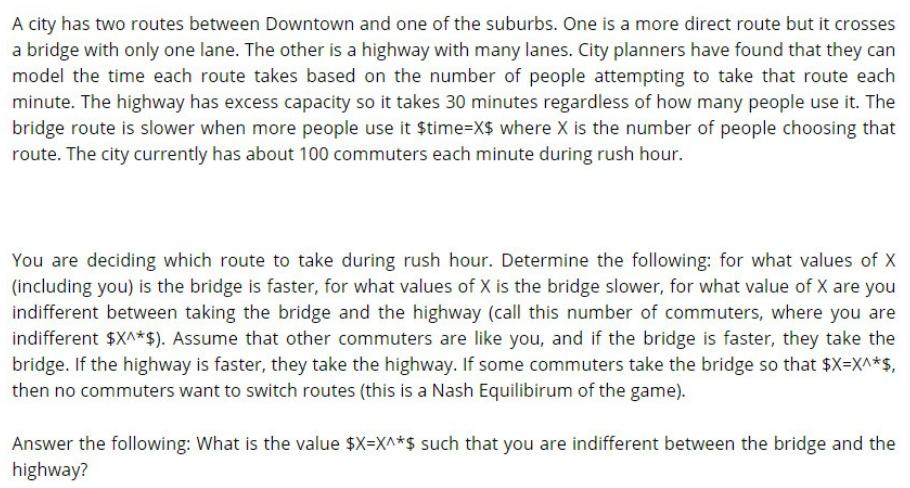Answered step by step
Verified Expert Solution
Question
1 Approved Answer
A city has two routes between Downtown and one of the suburbs. One is a more direct route but it crosses a bridge with

A city has two routes between Downtown and one of the suburbs. One is a more direct route but it crosses a bridge with only one lane. The other is a highway with many lanes. City planners have found that they can model the time each route takes based on the number of people attempting to take that route each minute. The highway has excess capacity so it takes 30 minutes regardless of how many people use it. The bridge route is slower when more people use it $time=X$ where X is the number of people choosing that route. The city currently has about 100 commuters each minute during rush hour. You are deciding which route to take during rush hour. Determine the following: for what values of X (including you) is the bridge is faster, for what values of X is the bridge slower, for what value of X are you indifferent between taking the bridge and the highway (call this number of commuters, where you are indifferent $X^*$). Assume that other commuters are like you, and if the bridge is faster, they take the bridge. If the highway is faster, they take the highway. If some commuters take the bridge so that $X-X^*$, then no commuters want to switch routes (this is a Nash Equilibirum of the game). Answer the following: What is the value $X=X^*$ such that you are indifferent between the bridge and the highway?
Step by Step Solution
★★★★★
3.39 Rating (155 Votes )
There are 3 Steps involved in it
Step: 1
During rush hur 100 mmuters If X 30 then the bridge ...
Get Instant Access to Expert-Tailored Solutions
See step-by-step solutions with expert insights and AI powered tools for academic success
Step: 2

Step: 3

Ace Your Homework with AI
Get the answers you need in no time with our AI-driven, step-by-step assistance
Get Started


